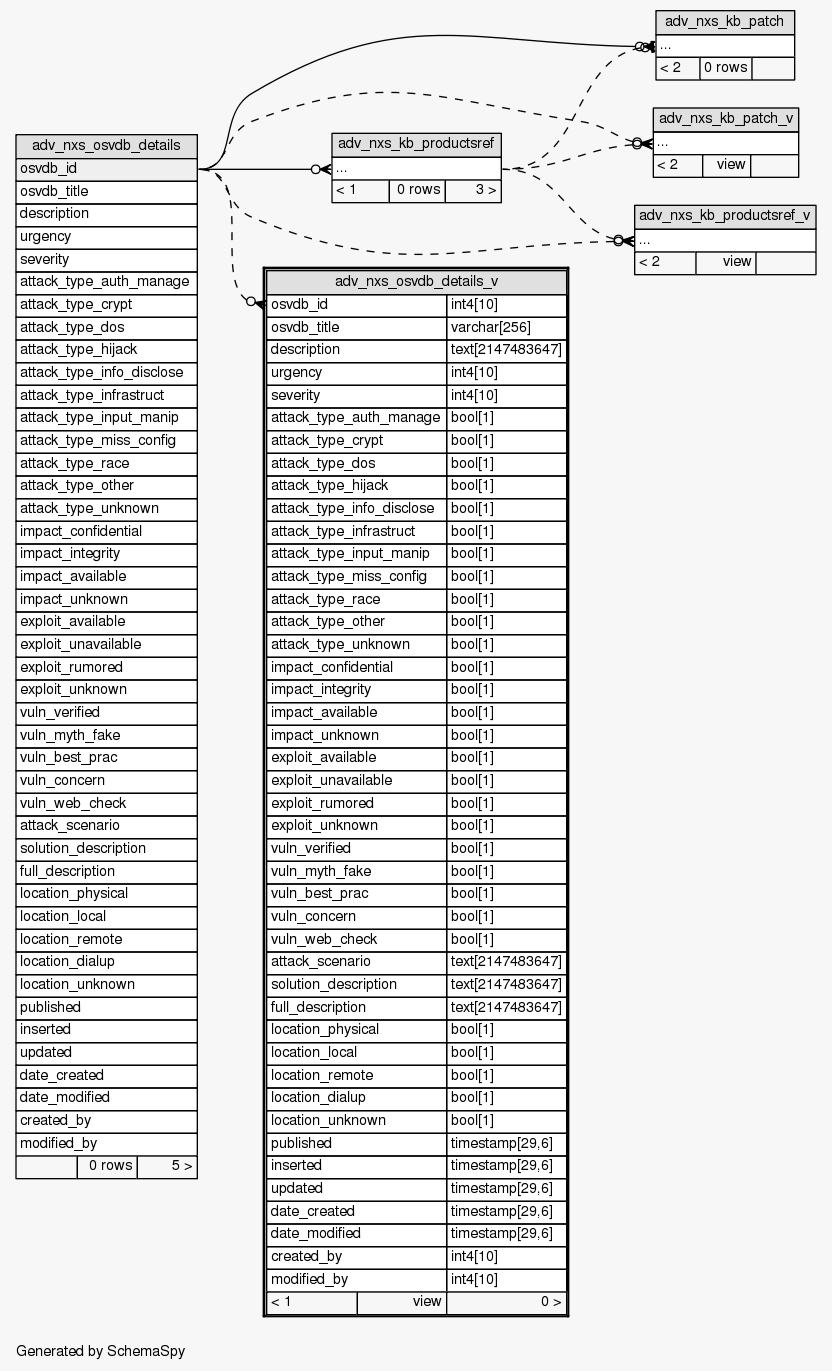| Column |
Type |
Size |
Nulls |
Auto |
Default |
Children |
Parents |
| osvdb_id |
int4 |
10 |
√ |
|
null |
|
|
| osvdb_title |
varchar |
256 |
√ |
|
null |
|
|
| description |
text |
2147483647 |
√ |
|
null |
|
|
| urgency |
int4 |
10 |
√ |
|
null |
|
|
| severity |
int4 |
10 |
√ |
|
null |
|
|
| attack_type_auth_manage |
bool |
1 |
√ |
|
null |
|
|
| attack_type_crypt |
bool |
1 |
√ |
|
null |
|
|
| attack_type_dos |
bool |
1 |
√ |
|
null |
|
|
| attack_type_hijack |
bool |
1 |
√ |
|
null |
|
|
| attack_type_info_disclose |
bool |
1 |
√ |
|
null |
|
|
| attack_type_infrastruct |
bool |
1 |
√ |
|
null |
|
|
| attack_type_input_manip |
bool |
1 |
√ |
|
null |
|
|
| attack_type_miss_config |
bool |
1 |
√ |
|
null |
|
|
| attack_type_race |
bool |
1 |
√ |
|
null |
|
|
| attack_type_other |
bool |
1 |
√ |
|
null |
|
|
| attack_type_unknown |
bool |
1 |
√ |
|
null |
|
|
| impact_confidential |
bool |
1 |
√ |
|
null |
|
|
| impact_integrity |
bool |
1 |
√ |
|
null |
|
|
| impact_available |
bool |
1 |
√ |
|
null |
|
|
| impact_unknown |
bool |
1 |
√ |
|
null |
|
|
| exploit_available |
bool |
1 |
√ |
|
null |
|
|
| exploit_unavailable |
bool |
1 |
√ |
|
null |
|
|
| exploit_rumored |
bool |
1 |
√ |
|
null |
|
|
| exploit_unknown |
bool |
1 |
√ |
|
null |
|
|
| vuln_verified |
bool |
1 |
√ |
|
null |
|
|
| vuln_myth_fake |
bool |
1 |
√ |
|
null |
|
|
| vuln_best_prac |
bool |
1 |
√ |
|
null |
|
|
| vuln_concern |
bool |
1 |
√ |
|
null |
|
|
| vuln_web_check |
bool |
1 |
√ |
|
null |
|
|
| attack_scenario |
text |
2147483647 |
√ |
|
null |
|
|
| solution_description |
text |
2147483647 |
√ |
|
null |
|
|
| full_description |
text |
2147483647 |
√ |
|
null |
|
|
| location_physical |
bool |
1 |
√ |
|
null |
|
|
| location_local |
bool |
1 |
√ |
|
null |
|
|
| location_remote |
bool |
1 |
√ |
|
null |
|
|
| location_dialup |
bool |
1 |
√ |
|
null |
|
|
| location_unknown |
bool |
1 |
√ |
|
null |
|
|
| published |
timestamp |
29,6 |
√ |
|
null |
|
|
| inserted |
timestamp |
29,6 |
√ |
|
null |
|
|
| updated |
timestamp |
29,6 |
√ |
|
null |
|
|
| date_created |
timestamp |
29,6 |
√ |
|
null |
|
|
| date_modified |
timestamp |
29,6 |
√ |
|
null |
|
|
| created_by |
int4 |
10 |
√ |
|
null |
|
|
| modified_by |
int4 |
10 |
√ |
|
null |
|
|
Analyzed at Mon Mar 26 23:24 EDT 2012
|



